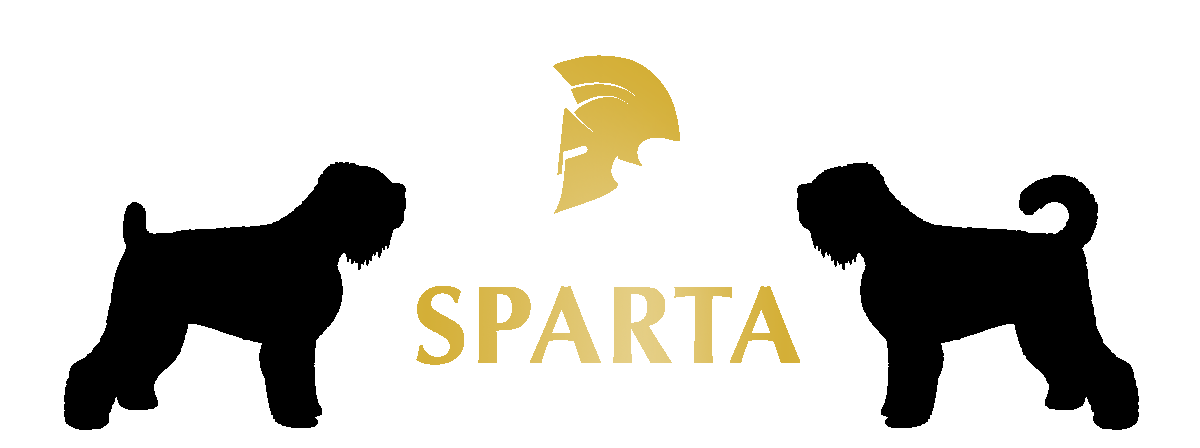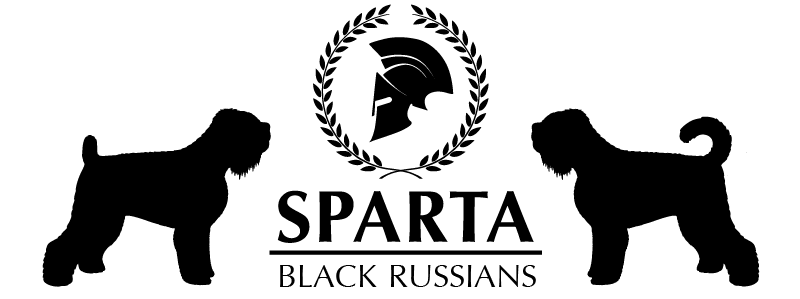ARE BLACK RUSSIAN TERRIERS RIGHT FOR YOU?
CHARACTERISTICS, HISTORY, & OUR BREEDING PROGRAM
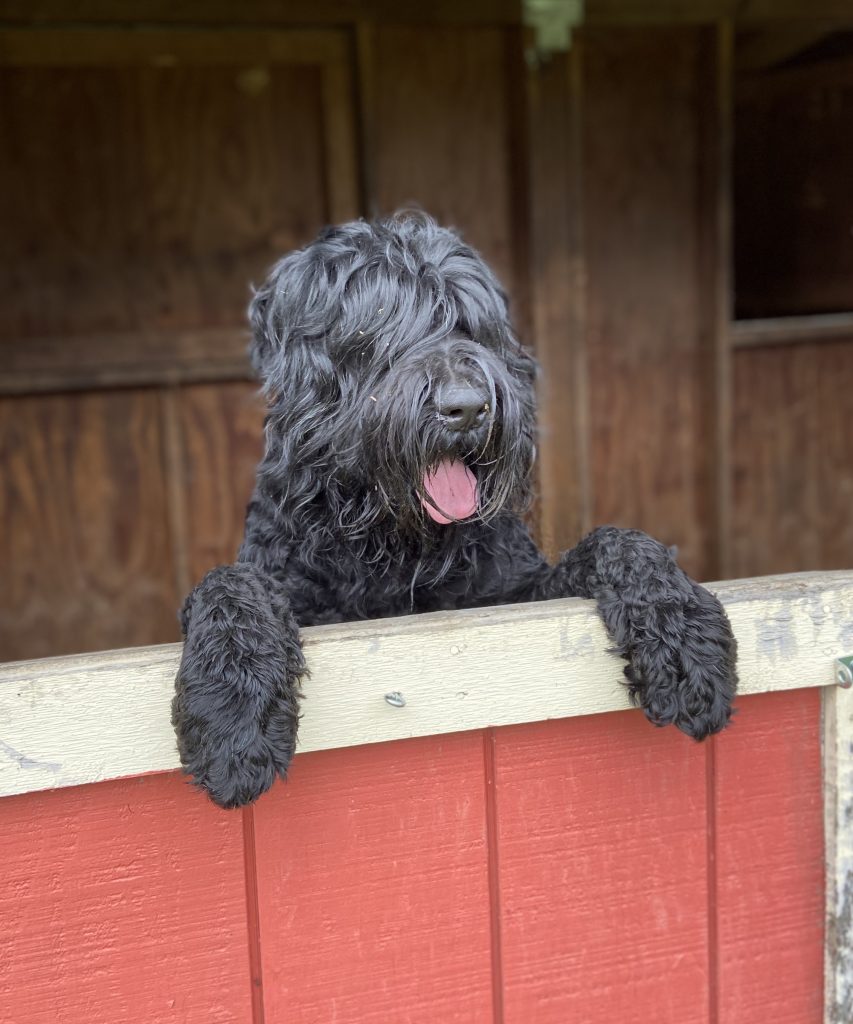
OUR FAVORITE MOTTO
“ Life with a Black Russian is never dull! Give them what they need to thrive and they will reward you tenfold in kind! ”
– SPARTA BRT
THE BLACK RUSSIAN TERRIER
The Black Russian Terrier is considered a large to giant sized breed. It is a relatively young breed with a partially hidden genealogic history. The breed originated in Russia after World War II, and was developed by the Russian military, more specifically the Soviet Army’s Red Star Kennel. In Russia the breed is known as the Tchiorny Terrier, while here it is known as the Black Russian Terrier, or Black Russian. They are sometimes called BRTs, Blackies, and RBTs (Russian Black Terriers) to name a few of the most common nicknames.
Despite the Terrier name, the breed is not a true terrier. The BRTs foundations are believed to have involved around 17 different breeds, with Giant Schnauzer, Rottweiler, and Airedale Terrier playing a prominent role, along with Newfoundland, Caucasian Ovcharka, Moscow Diver Dog, Great Dane, and some other speculated breeds. The breed’s foundation and history is fascinating and we encourage you to read more. Please feel free to check out The Black Russian Terrier Club of America for more resources. There is also a 5-part book collection (The Creation of the Black Russian Terrier; Vol 1-5) that does a wonderful job of delving into the complex history of this fascinating breed.
The BRT, then known the Black Terrier, was granted FCI acceptance in 1984. Here is the USA the Black Russian Terrier was given full AKC recognition in 2004 and are considered by the AKC to be a member of the Working Group.
Males should be between 27” to 30” tall at the whither and 100-150lbs, and females should be between 26” to 29” at the whither and 80-120lbs. Proportion, substance, and balance play key roles. Our dogs should have good substance and bone to balance their height. Oversize Black Russians that are too large and lumbering to adequately do the job they were intended for are not appropriate in our minds. Dogs that are too small and fine in frame are also not appropriate.
Movement is very important to us! Our dogs’ movement should exude power, strength, and effortless grace. They should have the athleticism and agility to take down an intruder with ease and keep going, and still be large and imposing enough to be a formidable threat without moving a muscle.
We strive to breed consistent litters that should all fit this goal. That being said genetics can be a fickle friend. Even with the best of pairings you can get some inconsistencies with some individuals being smaller or larger than intended. Our breed has the added challenge of not being too far removed from our progenitors, and as a result we do have different body styles in different lines. Unlike some breeds that have been around as a breed for hundreds of years our gene pool is much much younger. There are times that a pairing even from the most knowledgeable breeder can result in genetic variation with some features that are throw backs to one of the founding breeds. It is interesting from a genetic and biological aspect, but can most certainly be frustrating to breeders. Though the good breeders will work to avoid this.
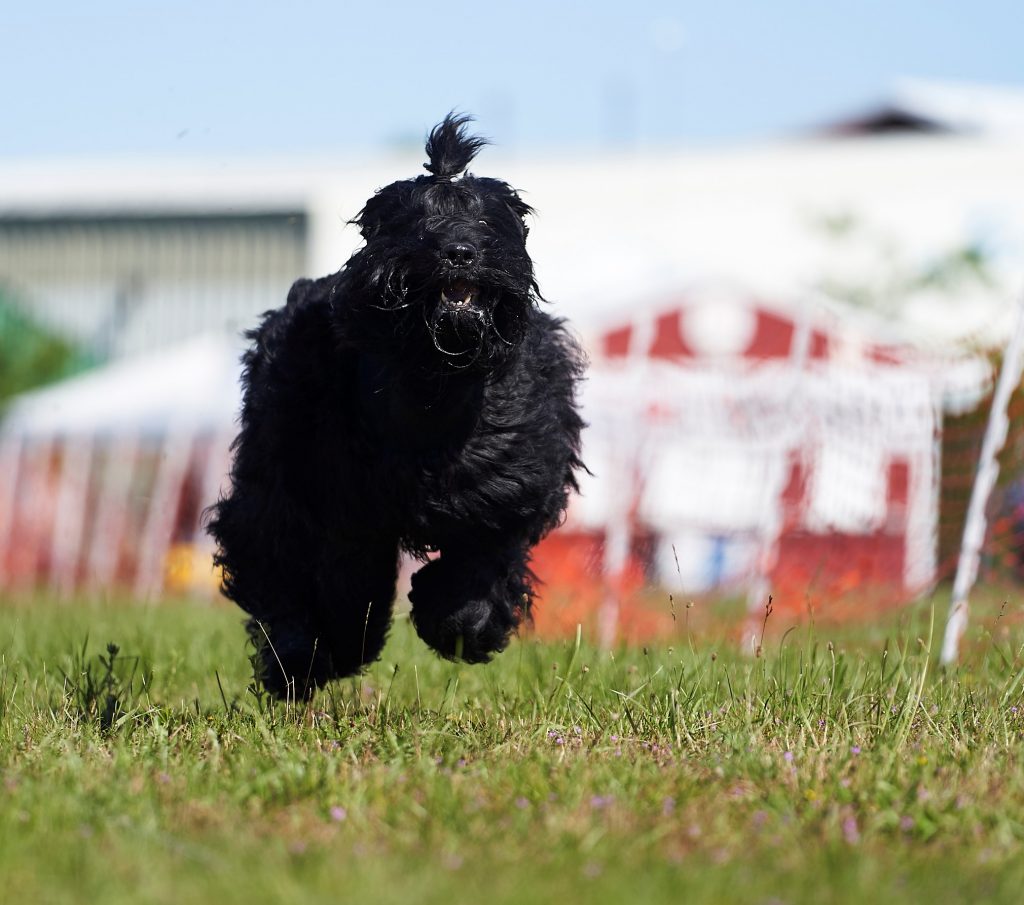
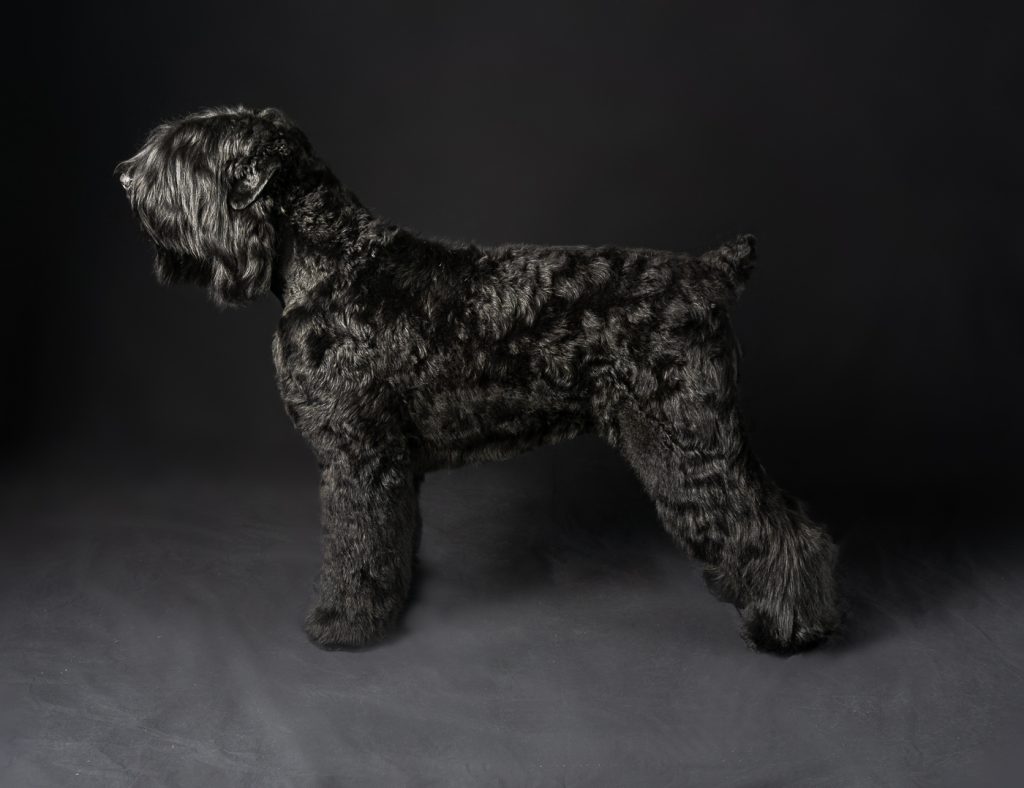
The BRT is a double coated hair breed. There is some variation in coat type based off of lines, but they should have a wavy to wiry top coat and a dense undercoat, along with facial furnishings that include a fall that covers the eyes and a beard. Some do classify the BRT as a low/non shedding breed, though we always caution people that there is really no such thing unless it is hairless. The amount of effort that is put into regular brushing and grooming will be the ultimate predictor of how much hair you will find around the house. These guys do require brushing and regular hair maintenance similar to other hair coated breeds. The amount of maintenance is going to depend on the personal desires of the owners. A full show coat will obviously require more time and work, but people that are not showing will often choose to put their dogs into one of a whole variations of sport or pet clips.
They are a fun and versatile breed that thrives off close and regular human interaction. They want to be with their family and are not a breed that does well in a kennel environment or left unattended in a yard most of the time. The Black Russian is one of the most empathetic and intuitive breeds we have ever come across. The Black Russian also has an incredible innate ability to protect, and the intelligence to understand the difference between what could or could not be a threat when given the proper leadership. They have an amazing ability to mold themselves to your life, whether you live in an apartment or have a 20-acre farm, the BRT has a knack for fitting into your life like no other when given the proper time, training, and leadership. They can excel at a variety of tasks including service work, therapy work, competitive obedience, scent work and tracking, many other dog sports, serious protection work, and of course just being the perfect family pet. Their average life expectancy is 10-12 years with some exceeding this expectation by several years, while some sadly leave us much earlier.
Early, consistent, and lifelong training are a must with this breed. They are naturally more cautious of strangers, and like many working breeds have a lower threshold for aggression. It is important that the proper groundwork through training and socialization is laid early and often. Sometimes just simple acts of leadership will make a huge difference in the relationship. Good breeders will caution the importance of training and socialization over and over, but do not think of this as a daunting task. Consistency is key with these guys. We want you to work to be a benevolent leader, it is not about dominating your dog or showing them “whose boss”, it is about relationship building in which the dogs see you as the wise leader and they are eager to follow your path. We advise people to follow the “Nothing in life is Free” ideas at first. This simply means you ask your dog to do something polite for you before they get something in return.
As with physical characteristics, there is also going to be variation in temperament dependent on the lines being bred. Some lines are going to produce harsher temperaments than others and this is perfectly acceptable. It is important to recognize those lines that will do okay in a novice home and those lines that absolutely require more experienced hands. We also believe it is perfectly acceptable to be breeding both this keeps our breed adaptable. When an individual puppy or dog is properly paired with a family, or individual, that is willing to put the proper time into their dog they can be a great addition to a wide variation of households.
We raise our puppies using techniques from the Puppy Culture Program, as well as Avidog. They are raised in our homes and exposed to a wide range of varying stimuli and situations at a young age. These techniques are scientifically proven to help puppies grow into more resilient adults that are better capable of handling new situations with a level head. If you continue to expose your puppy to the lifestyle you want them to live with you early and often, be consistent with them, and make it rewarding for them, they are extremely adaptable. It is also important to recognize that even with consistent breeding each puppy/dog is an individual. Not all of them are going to fall into the same category even if they come from the same parents and were raised the same way. We will advise people about which puppies we feel may be best for them based off individual personality, wants and needs.

